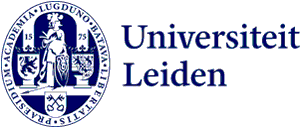
Clay tablets dating back thousands of years moved: ‘From receipts to the oldest literary works’
How do you move 3,000 fragile clay tablets that date back thousands of years? This was the challenge faced by staff from the Netherlands Institute for the Near East (NINO). After years of preparation, the Liagre Böhl collection has been moved on trolleys to its new home.
A small removal team carefully wheels the largest collection of clay tablets in the Netherlands along Matthias de Vrieshof to the University Library. The Liagre Böhl collection has been stored in a large vault at NINO since 1982. Researchers from all over the world came there to study these texts that are around 2,100 to 4,300 years old.
The tablets contain a variety of texts in cuneiform script. ‘From a receipt for a grain delivery to the Epic of Gilgamesh, one of the oldest literary works’, says associate professor Willemijn Waal. She is the director of NINO, which manages the collection, and is one of the movers.

A single character makes a huge difference
NINO is moving to the Herta Mohr building in the new Cluster Zuid in July, and will no longer be able to keep the collection in its own rooms. The tablets are therefore going to the Leiden University Libraries (UBL) Special Collections, where they will remain available for research and teaching. And that is important, Waal explains, ‘Clay tablets are 3D objects. Even though photos and translations are available, to study them properly you need to be able to see them from all sides.’ She shows a tablet that has also been inscribed on its side. ‘See how the light determines what you see? Just one character can make a huge difference.’
Years of preparation
The tablets are only being moved about 50 metres but the preparations took years. Conservator Carmen Gütschow has been arranging and inspecting the tablets since 2017. She is probably the only conservator in the world who specialises in these clay tablets and therefore travels all over the globe.

Despite having survived for more than 4,000 years, some of the tablets are quite fragile. The salt in the clay poses a constant threat because the crystals react to humidity, causing the tablets to fall apart, says Gütschow. In the past, they were sometimes fired but this damaged many of them. Later, the tablets were also desalinated by immersing them in baths of distilled water. ‘Even that is no guarantee for eternity, as we can see today.’
While preparing for the move, Gütschow was in for many a surprise. What is the biggest challenge that she encountered? Smiling, she picks up a bag of grit. With difficulty, flakes can be found that still contain cuneiform script. ‘I look at all these fragments under a microscope and try to glue them back together’, she says. It is painstaking work that can take her days at a time.
Dubious traders
Gütschow also came across past repairs that hadn’t been done properly. ‘I discovered several tablets consisting of pieces glued together that do not belong together. This was probably done by traders who hoped to get more money for the tablets.’ Before 1940, objects sometimes came from dubious trading because there were as yet no clear regulations.
Not just such problem cases but the whole collection has been checked, stabilised and restored where necessary by Gütschow, before being put in individual boxes, with the help of students. These small boxes were then put in larger boxes for their first journey since 1982, to their brand-new home.

Middle Eastern Library
Researchers will be able to study the tablets on request in the Special Collections reading room at the UBL. The Böhl collection is also widely used for teaching Assyriology students. They learn to decipher the cuneiform script entrusted to the clay thousands of years ago. The books from the NINO library will be housed at the new Middle Eastern Library (MEL).
Waal watches somewhat wistfully as the collection is wheeled out of the NINO library, but is pleased with its new home. ‘The new location is a huge improvement. Special Collections has better climate control and security. The clay tablets fare best at stable humidity and a constant temperature.’ This is how the staff are ensuring that the collection will live on, hopefully for thousands of years to come.
Text: Tom Janssen
Photos: Patrice Börger
Banner photo: Carolien van Zoest (editor at NINO) and Willemijn Waal with a trolley full of clay tablets
